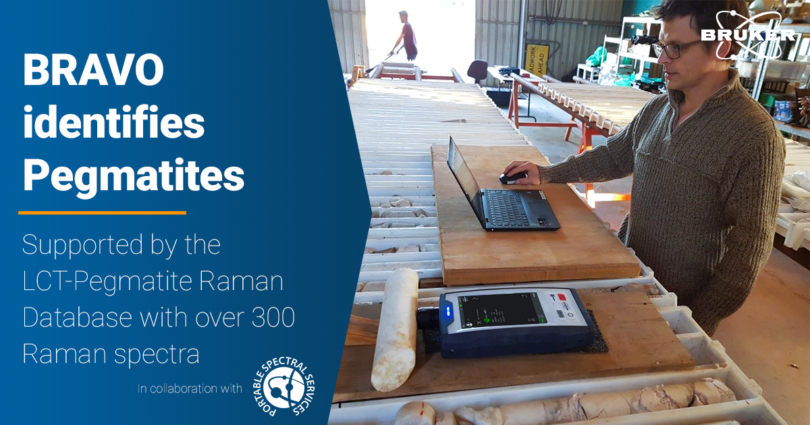Exploration into lithium rich deposits including lithium-caesium tantalum (LCT) pegmatites, has globally expanded rapidly in the last 10 years. Real time identification of the mineralogy is critical to understand the prospectivity and for decision making. However, dominant minerals within pegmatite systems are visually very similar (varying shades of white) and can be challenging to identify. Bruker’s handheld Raman spectrometer BRAVO with its dedicated LCT-Pegmatite Raman Database removes this challenge providing real time decision capability and easy operation for pegmatite analysis (Figure 1). Samples require no preparation prior to analysis and can be applied to RC chips, diamond cores, powders and hand samples.
Easy and Guided Workflow for Mineral Analysis
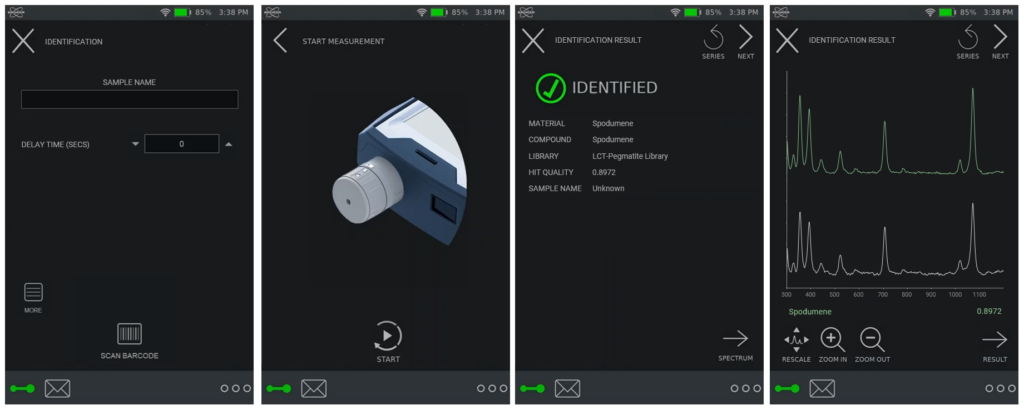
Application of Raman to Mineral Exploration and Mining
The application of Raman spectroscopy in earth sciences has been well documented [1], and its use in exploration and mining applications are rapidly emerging with Raman spectroscopy being ideally suited for the analysis of pegmatite minerals such as quartz, feldspars, micas, spodumene and other Li-bearing silicates, pollucite, garnet, topaz, beryl, carbonates, apatite, etc. (Figure 2).
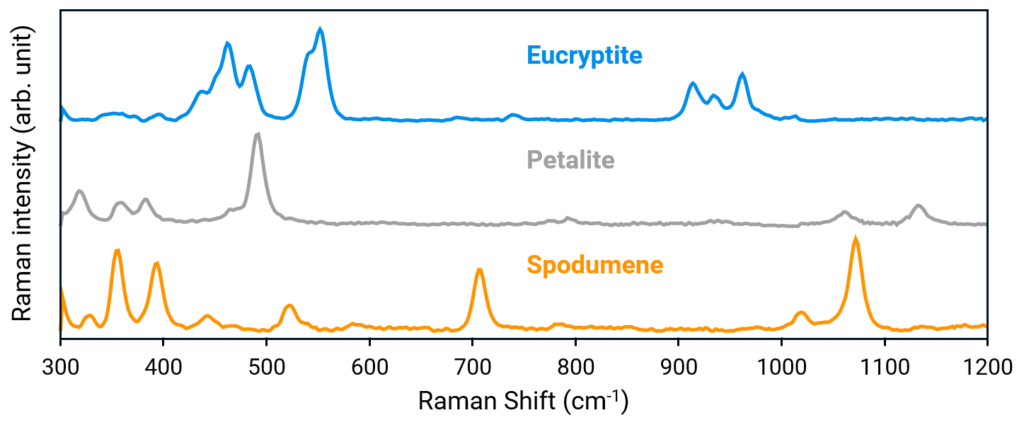
BRAVO allows rapid mineral identification due to unique features including SSE™ (Sequentially Shifted Excitation), a patented fluorescence mitigation which removes inherent fluorescence for minerals. SSE™ along with the DuoLaser™ excitation at 785 nm and 852 nm provide unparalleled sensitivity across a broad spectral range (300 – 3200 cm-1) and guarantee maximum unambiguous mineral identification and verification through the LCT-Pegmatite library. Optional, the spectral range can be extended down to 170 cm-1. The BRAVO is easy-to-use, especially as a Laser Class 1 certified device with an intuitive, guided operation.
LCT-Pegmatite Raman Database
For identifying pegmatite mineralogy, a custom spectral BRAVO library was developed by Portable Spectral Services* and tested on over 10,000 samples.
- >300 high quality Raman spectra of LCT minerals and mineral mixtures
- Comprehensive mineral information data sheets
- Spectral quality & references verified by XRD
- Regular library update (once per year)
- Set of three reference material standards
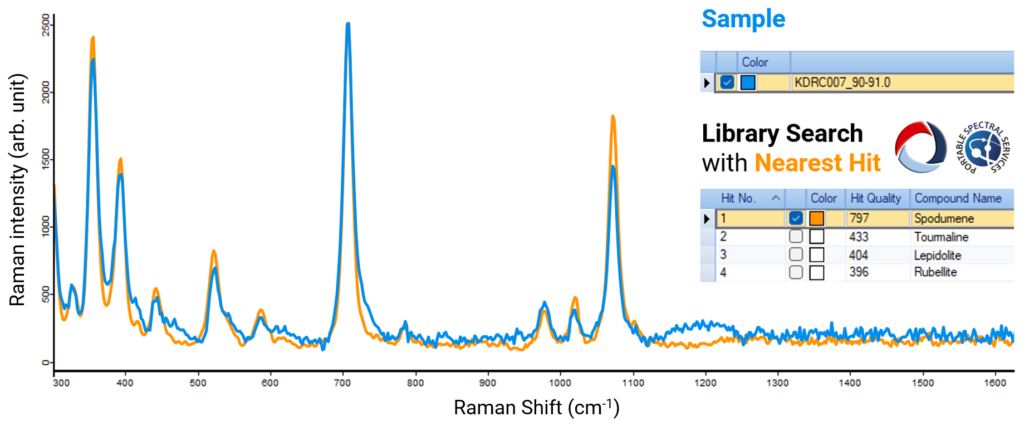
Case Study 1:
Ore Body Knowledge and Waste Control Management
The BRAVO has been successfully used to acquire “front-end” knowledge to characterize the Sinclair Pollucite ore body, Western Australia prior to mining [2]. Over 8,000 reverse circulation (RC) and diamond drill (DD) core samples were analyzed to provide critical information on the distribution of key economic minerals, pegmatite zonation and used to develop a predictive 3D model of the deposit (Figure 3). During mining, an additional 2,000 grade control samples were analyzed to confirm the distribution of critical minerals within the ore-blocks and aid in grade and waste control classification and management.
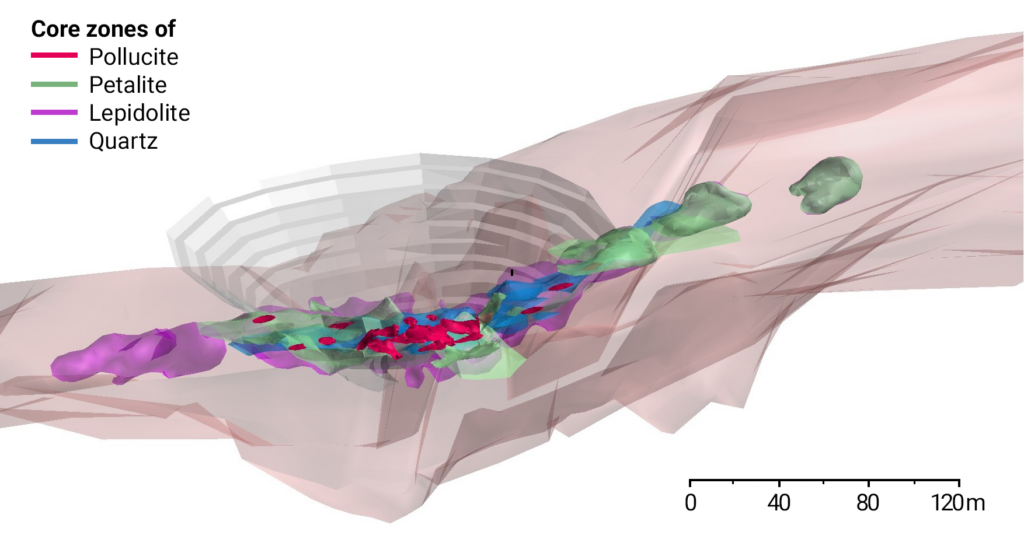
Case Study 2: Mine Discovery
Pioneer Resources pioneered the application of the BRAVO handheld Raman spectrometer in mineral exploration and mining and used this knowledge to identify spodumene bearing pegmatites that resulted in the discovery of the Cade Spodumene Deposit (Figure 4).
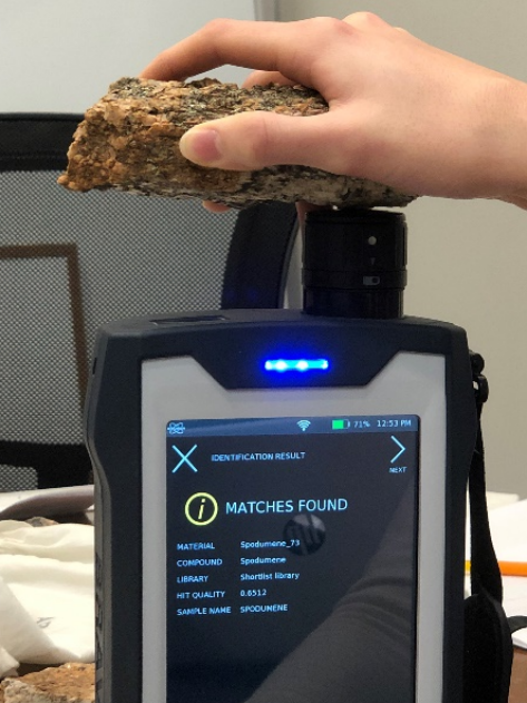
Case Study 3: Spodumene Confirmation
Exploration companies are embracing the BRAVO handheld Raman spectrometer to assist in initial field observations, pegmatite analysis and mapping and mineralogy confirmation. Maximus Resources applied the BRAVO to confirm the presence of spodumene at their Kandui Project, Western Australia (Figure 5) [4].

Conclusion
The BRAVO handheld Raman spectrometer is a proven mineral exploration and mining tool for pegmatite analysis. It is used to identify the presence of critical minerals in an LCT Pegmatite system, aid in ore-body knowledge, grade and waste management control and providing real time decision capability for economic mineral discoveries.
References:
[1] Dubessy, 2012[2] Perring & Brand, 2019 Brand et al EXPLORE 190 2021. Perring and Brand AEGC2019 abstract.
[3] (PIO 2019a, b & c PIO (a) Pioneer Resources: ASX 25th June 2019. PIO (b) Pioneer Resources: ASX 17th July 2019. PIO (c) Pioneer Resources: ASX 30th July 2019.
[4] MXR, 2023 MXR: Maximus Resources ASX release 21st November 2023.
*More info at georaman.com and portaspecs.com
If you are interested in other Geoscience Raman applications, you may have a look at our other Blog entries using Raman microscopy:


